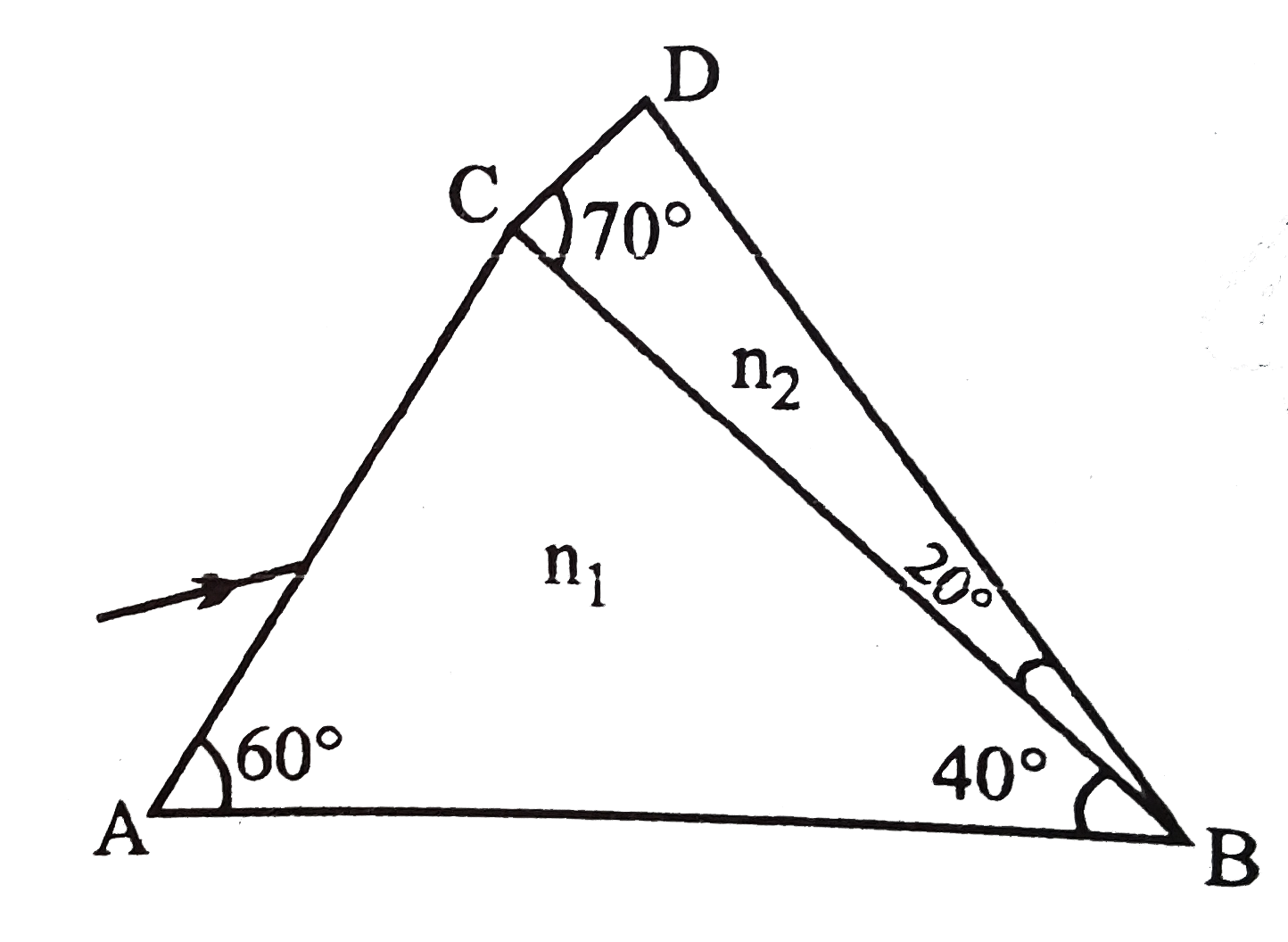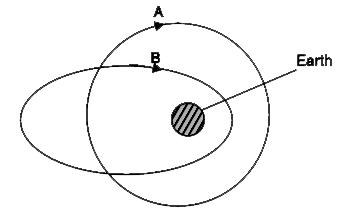Statement-1: Two satellites A & B are in the same orbit around the earth B being behind A. B cannot overtake A by increasing its speed.
Statement-2: it will then go into a different orbit. Solution in Gujrati
Statement-1 is true, statement-2 is true: Statement-2 is a correct explanation for statement-1
Statement-1 is true, Statement-2 is true, Statement-2 is not a correct explanation for Statement-1
Statement-1 is true, Statement-2 is false.
Statement-1 is false, Statement-2 is true.
The correct Answer is:A
Step by step video solution for Statement-1: Two satellites A & B are in the same orbit around the earth B being behind A. B cannot overtake A by increasing its speed. Statement-2: it will then go into a different orbit. by Physics experts to help you in doubts & scoring excellent marks in Class 12 exams.
Updated on:21/07/2023Topper's Solved these Questions
- GRAVITATIONBook:ALLEN Chapter:GRAVITATIONExercise:Exercise 4 A (Conceptual Subjective Exercise)
Explore 14 Videos
- GRAVITATIONBook:ALLEN Chapter:GRAVITATIONExercise:Exercise 4 B (Brain Storming Subjective Exercise)
Explore 20 Videos
- GRAVITATIONBook:ALLEN Chapter:GRAVITATIONExercise:Exercise 2 (Brain Teasers)
Explore 27 Videos
- GEOMETRICAL OPTICSBook:ALLEN Chapter:GEOMETRICAL OPTICSExercise:subjective
Explore 14 Videos
- KINEMATICS-2DBook:ALLEN Chapter:KINEMATICS-2DExercise:Exercise (O-2)
Explore 47 Videos
Similar Questions
_E01_076_Q01.png)
In the given figure L=1 metre if total gravitational force on 4 kg mass is →F1 and on 2 kg mass is →F2 then find out the ratio of ∣∣∣→F1→F2∣∣∣
View SolutionA small satellite revolves around a heavy planet in a circular orbit. At certain point in its orbit a sharp impulse acts on it and instantaneously increases its kinetic energy to 'k' (<2) times without change in its direction of motion show that in its subsequent motion the ratio of its maximum and minimum distance from the planet is k2−k assuming the mass of the satellite is negligibly small as compared to that of the planet.
View SolutionOne projectile after deviating from its path starts moving round the earth in a circular path of radius equal to nine times the radius of earth R. Its time period is
View SolutionA prism of refractive index n1 & another prism of reactive index n2 are stuck together without a gap as shown in the figure.The angle of the prisms are as shown. n1&n2depend onλ,the wavelength of light according to n1=1.20+10.8×104λ2&n2=1.45+1.80×104λ2 where λ is in nm.

(i)Calculate the wavelength λ0for which rays incident at any angle on the interfaceBCpass through without bending at that interface.
(ii) for light of wavelength λ0,find the angle of incidencei on faceACsuch that the deviation produced by the combination of prism is minimum.
View SolutionA particle is moving in xy-plane .At certain instant the components of its velocity and acceleration are as follows ux=3m/s,uy=4m/s,ax=2m/s2anday=1m/s2. The rate of change of speed at this moment is
View SolutionThe radii of circular orbits of two satellite A and B of the earth are 4R and R, respectively. If the speed of satellite A is 3v, then the speed of satellite B will be
View SolutionStatement-1: A satellite is moving in a circular orbit of the earth. If the gravitational pull suddenly disappears. Then it moves with the same speed tangential to the orginal orbit. Statement-2: the orbital speed of a satellite increases with the increase in radius of the orbit.
View SolutionSatellite A is following a circular path of radius a around the earth another satellite B follows an elliptical path around the earth. The two satellites have same mechanical energy and their orbits intersect. Find the speed of satellite B at the point where its path intersects with the circular orbit of A. Take mass of earth to be M.

View SolutionSTATEMENT -1 : When an object is field from a satellite orbiting around earth in a circular orbit, its orbit becomes elliptical. and STATEMENT - 2 : When the speed of a satellite is slightly different from its orbital speed, its path is elliptical.
View SolutionTwo satellites A and B go around a planet in circular orbits of radii 4 R and R respectively. If the speed of the satellite A is 3 V, then the speed of the satellite B will be
View SolutionTwo satellites A and B are orbiting around the earth in ciruclar orbits of the same radius. The mass of A is 16 times that of B. Then the raito of the period of revolution of B to that of A is
View Solutionयदि पृथ्वी के समीप किसी उपग्रह की कक्षीय चाल 41.4 प्रतिशत बढ़ा दी जाये तो सिद्ध कीजिए कि पृथ्वी का परिक्रमण न करके अपनी कक्षा छोड़कर अंतरिक्ष में चला जायेगा ।
View Solutionपृथ्वी के दो उपग्रहों A तथा B की वृत्तीय कक्षाओं की त्रिज्याएँ क्रमशः 4R तथा R हैं । यदि उपग्रह की चाल 3y हो तो उपग्रह B की चाल होगी -
View SolutionTwo satellites A and B are orbiting around the earth in circular orbits of the same radius the mass of A is 16 times that of B. What is the ratio of the period of revolution of B to that of A?
View SolutionThe radii of circular orbits of two satellites A and B of the earth, are 4R and R, respectively. If the speed of satellite A is 3V, then the speed of satellite B will be :
View SolutionTwo satellite A and B go around a planet in circular orbits having radii 4R and R respectively. If the speed of satellite A is 3v, the speed of satellite B would be ..........
View Solution
